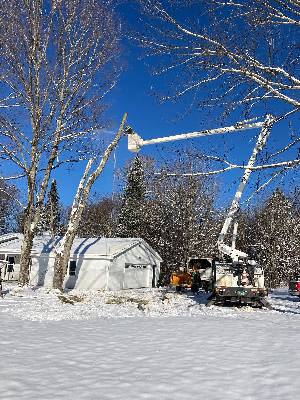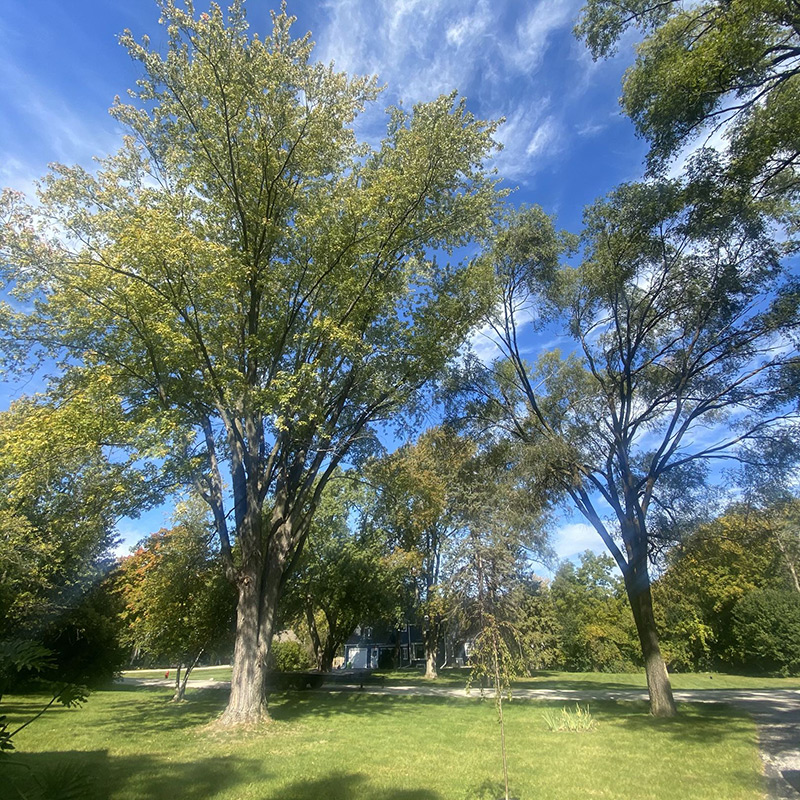Our full tree trims consist of removing dead branches, cross branching, interior cleaning, and even raising the canopy if requested by the customer. We specialize in safe pruning to give your trees, home, and other structures the necessary space to avoid damage. Trimming your trees will help keep them healthy and beautiful for years to come. Our amazing clean-ups are included in our tree trimming services.
Tree maintenance is an essential aspect of responsible homeownership and ensuring the well-being of the environment. Among the various tree care practices, tree trimming/ tree pruning stands out as a fundamental technique to maintain the health, aesthetics, and safety of your trees.
Tree trimming, also called tree pruning, primarily involves the selective removal of specific branches or stems to enhance the tree’s health, encourage proper growth, and address issues like disease or structural weaknesses. It can also aim to shape the tree, maintain its structural integrity, and improve its appearance.
Healthy trees sometimes require pruning. As trees age or become diseased, they will begin to show signs of “die-off”, or the loss of leaves. Dead branches can lead to serious injuries to people or severe property damage. Tree trimming can also help to maintain your trees while protecting your home, other structures on your property, and power lines, just to name a few. Contact Dunbar Tree Service for a consultation regarding your tree care needs.
Yes! We work in the winter! Winter is the perfect time for professional tree trimming and removal. While it may seem unconventional to tackle tree care during the winter months, the season presents distinct advantages for these essential winter tree services, such as reduced risk, enhanced visibility, and opportunities for preventative maintenance and pest control.
Contact Us today for a FREE QUOTE or to learn more about our winter services!


Regular maintenance helps trees fight off diseases and infestations. Trimming allows for better air circulation and sunlight exposure, promoting vigorous growth.
Trimming also reduces the risk of falling branches, which can pose a danger to people and property. Keeping trees well-maintained is crucial for safety.
Well-pruned trees enhance the visual appeal of your property. Proper shaping and removal of deadwood can transform the appearance of your landscape.
The ideal time for tree trimming varies depending on the tree species. However, late winter or early spring, before new growth begins, is often the best time for most trees.
Winter has the advantage of snow cover, which acts as a natural cushion. This reduces the impact of falling branches during trimming or removal.
Look for signs such as overgrown branches, crossing branches, or dead limbs. These are indications that your tree requires attention. If you’re unsure, an arborist can inspect your trees and give an idea of what needs to be done.
Selective pruning involves the removal of specific branches to improve tree structure and health. Specific branches are targeted to enhance the tree’s structure, improve air circulation, and promote sunlight penetration. This method is particularly beneficial for maintaining a balanced canopy and reducing the risk of disease.
Crown reduction aims to reduce the overall size of the tree’s canopy, which can be beneficial for safety and aesthetics. This method is often employed to address issues like storm damage, improve structural integrity, or prevent interference with nearby structures. It also helps maintain the natural shape of the tree while promoting healthy growth.
Deadwood removal involves the removal of dead or decaying branches from a tree. This not only enhances the tree’s appearance but also prevents the spread of diseases and minimizes the risk of falling branches.
Thinning involves selectively removing branches to improve air circulation and reduce stress on the tree. The focus is on strategically removing certain branches throughout the tree to reduce its density. This practice not only enhances aesthetics but also allows wind to pass through the canopy more easily, reducing the risk of storm damage.